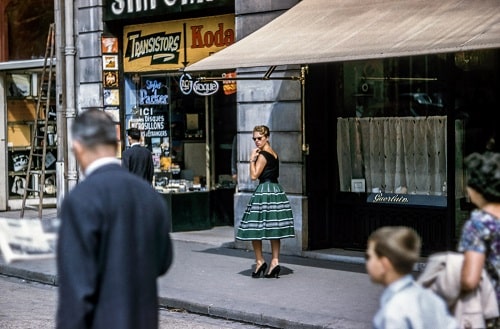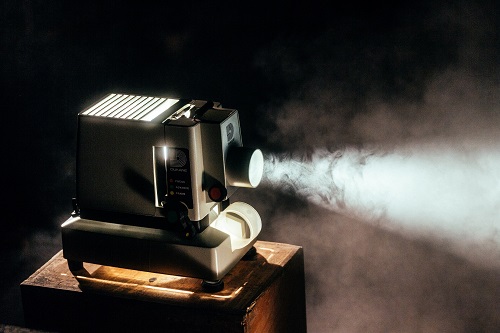“The Last Voyage of the Demeter” is a modern take on Bram Stoker’s classic novel, Dracula. The movie follows the ill-fated voyage of the Demeter, a ship carrying a mysterious cargo from Transylvania to London. The film is directed by André Øvredal, known for his work on horror films such as “The Autopsy of Jane Doe” and “Scary Stories to Tell in the Dark.”
Critics have had mixed reactions to the film. While some have praised its fresh take on the Dracula story, others have criticized its lack of scares and reliance on jump scares. The film has a 49% rating on Rotten Tomatoes, with the critics’ consensus stating that “The Last Voyage of the Demeter finds a fresh angle on Dracula’s oft-told tale, although it doesn’t always deliver on its promise.”
The Modern Take on Dracula
“The Last Voyage of the Demeter” is a modern take on the classic horror story of Count Dracula by Bram Stoker. This movie is based on a single chapter from the novel, where the ship Demeter is carrying Dracula’s coffin from Transylvania to England. The ship’s crew is gradually killed off one by one, and the ship eventually crashes on the shores of Whitby, England.
The movie is directed by André Øvredal, who is known for his work on the horror movie “Trollhunter” and the thriller “The Autopsy of Jane Doe.” The movie stars Javier Botet as Dracula, Liam Cunningham as Captain Eliot, and Chris Walley as Patrick. The movie was produced by Universal Pictures and Amblin Entertainment.
The movie’s modern take on Dracula is intriguingly old-fashioned, until its conventional megaplex demon shows up, according to a review by Variety. The movie tries to capture the essence of the original novel, but it falls short in its execution. The movie does not live up to the legacy of Dracula, according to a review by The Verge.
The movie tries to be scary, but it fails to deliver the chills that the original novel provided. The movie lacks suspense and atmosphere, and it relies too much on jump scares and special effects. The movie does not explore the psychological depths of the characters, and it does not delve into the themes of the original novel.
Overall, “The Last Voyage of the Demeter” is a missed opportunity to create a modern masterpiece out of a classic horror story. The movie has its moments, but it falls short in its execution. The movie is worth watching for fans of Dracula, but it is not a must-see movie for horror fans.
Casting and Performance
The Last Voyage of the Demeter boasts an impressive cast of talented actors who bring their A-game to the screen. The performances are nuanced, layered, and engrossing, making the movie a must-watch for fans of the horror genre.
Main Characters
Corey Hawkins, known for his roles in Straight Outta Compton and 24: Legacy, plays the lead role of Henry Clemens, the first mate of the Demeter. Hawkins brings a sense of gravitas to the role, portraying Clemens as a man of principle who is willing to do whatever it takes to protect his crew from the dangers that lurk on board.
Liam Cunningham, who is best known for his role as Ser Davos Seaworth in Game of Thrones, plays the captain of the Demeter, Nikitin. Cunningham’s performance is understated but powerful, as he conveys the weight of his responsibility as the leader of the ship and the man ultimately responsible for the safety of his crew.
Olga Kurylenko, who has appeared in movies such as Quantum of Solace and Oblivion, plays Anna Billington, a passenger on board the Demeter. Kurylenko’s performance is captivating, as she portrays Anna as a woman with a dark past who is haunted by her own demons.
Supporting Cast
In addition to the main cast, The Last Voyage of the Demeter also features a talented supporting cast. Among them are:
- Javier Botet as Dracula
- David Dastmalchian as Skinsky
- Alice Eve as Lucy Westenra
Botet’s performance as Dracula is chilling and menacing, as he brings to life the iconic vampire in a way that is both faithful to the source material and fresh and exciting. Dastmalchian’s Skinsky is a memorable character, as he brings a sense of humor and levity to the movie. Eve’s portrayal of Lucy Westenra is nuanced and layered, as she captures the character’s vulnerability and strength in equal measure.
Overall, the casting and performances in The Last Voyage of the Demeter are top-notch, elevating the movie to a new level of excellence.
Plot and Narrative Structure
The Last Voyage of the Demeter is a modern take on the classic Dracula story, which follows the journey of a ship named Demeter as it travels from Bulgaria to London. The ship is carrying a mysterious cargo, which is revealed to be the coffin of Count Dracula. The crew begins to experience strange occurrences on board the ship, such as missing rats and crew members, and unexplained noises at night.
The film uses a non-linear narrative structure, with flashbacks and flash-forwards interspersed throughout the main storyline. These narrative devices are used to provide context, backstory, and foreshadowing, which helps to build tension and suspense. The flashbacks reveal the backstory of the crew members and their motivations for joining the voyage, while the flash-forwards provide glimpses into the future events that will take place.
The film is structured around a series of set pieces, which are designed to showcase the different ways that Dracula can manipulate and control his victims. Each set piece is self-contained, but also contributes to the overall narrative arc of the film. The set pieces include a storm at sea, a mutiny among the crew, and an attack by Dracula on the ship’s captain.
The film’s pacing is deliberate and slow, which allows the tension and suspense to build gradually. The use of long takes and static camera shots also contributes to the film’s overall sense of unease. The film is shot in a muted color palette, which gives it a somber and melancholic atmosphere.
Overall, The Last Voyage of the Demeter is a well-crafted horror film that successfully updates the classic Dracula story for a modern audience. The film’s use of non-linear narrative structure and set pieces helps to keep the audience engaged and invested in the story, while the deliberate pacing and somber atmosphere create a sense of dread and unease.
Cinematography and Visual Effects
The Last Voyage of the Demeter boasts impressive cinematography and visual effects that enhance the movie’s overall eerie atmosphere. The film’s director, André Øvredal, and cinematographer, Roman Vasyanov, expertly use lighting, camera angles, and color grading to create a sense of dread and foreboding throughout the movie.
The movie’s opening sequence, set on a misty dock at night, immediately sets the tone for the rest of the film. The use of low lighting and shadows creates an ominous atmosphere that is carried throughout the movie. The scenes set on the ship are equally impressive, with the cramped quarters and dim lighting adding to the claustrophobic feeling of the doomed voyage.
The visual effects in The Last Voyage of the Demeter are also noteworthy. The scenes featuring the supernatural force that haunts the ship are particularly well done. The use of practical effects, such as prosthetics and animatronics, adds a level of realism to the movie that is often missing in modern horror films. The CGI effects are also well executed, with the supernatural force appearing both terrifying and believable.
Overall, the cinematography and visual effects in The Last Voyage of the Demeter are a highlight of the movie. The expert use of lighting, camera angles, and visual effects create a sense of dread and foreboding that is sure to keep audiences on the edge of their seats.
Soundtrack and Musical Score
The Last Voyage of the Demeter features a haunting and atmospheric musical score composed by Thomas Newman, which perfectly complements the film’s eerie and suspenseful tone. The soundtrack album includes ten tracks, each of which captures the sense of dread and danger that permeates the story.
The opening track, “The Last Voyage of the Demeter,” sets the stage for the film with its ominous and foreboding melody, while “The Demeter Embarks” introduces the audience to the ship and its crew. “Meet My Crew” is a more upbeat and lighthearted track, showcasing the camaraderie and banter between the sailors.
As the story progresses, the music becomes increasingly tense and unsettling. “Where the Devil Sleeps” is a particularly effective track, with its dissonant strings and eerie whispers, while “Delusional Grief” features mournful piano and haunting vocals. “Sacrifices” is a standout track, with its driving percussion and ominous choir, perfectly capturing the sense of impending doom.
Despite its horror elements, the film’s score also has moments of beauty and tenderness. “In the Lantern’s Light” is a gentle and melancholic track, while “Wings in the Fog” has a soaring and triumphant melody that provides a brief respite from the tension.
Overall, the soundtrack and musical score of The Last Voyage of the Demeter are an essential part of the film’s success, enhancing the atmosphere and emotion of every scene.
Comparison with Original Dracula
The Last Voyage of the Demeter is a modern adaptation of Bram Stoker’s classic novel Dracula. The movie is based on the seventh chapter of the novel, which describes the voyage of the ship Demeter from Varna to Whitby, England, with the Count as the only passenger.
The original novel is considered a masterpiece of horror literature and has been adapted into various movies, TV shows, and plays over the years. The novel’s themes of vampirism, sexuality, and religion have made it a classic of the horror genre.
The Last Voyage of the Demeter differs from the original novel in several ways. Firstly, the movie focuses only on the voyage of the Demeter, whereas the novel is a much broader story that covers several characters and locations. Secondly, the movie has a more modern feel, with fast-paced action and jump scares, whereas the novel has a slower, more atmospheric pace.
Despite these differences, The Last Voyage of the Demeter remains faithful to the original novel in many ways. The movie captures the sense of dread and horror that permeates the novel, and the portrayal of the Count is true to the character in the book. The movie also explores some of the same themes as the novel, such as the fear of the unknown and the power of superstition.
Overall, The Last Voyage of the Demeter is a worthy adaptation of Bram Stoker’s classic novel. While it may not be as nuanced or complex as the original, it still manages to capture the essence of the story and deliver a thrilling horror experience for modern audiences.
Critic and Audience Reception
The Last Voyage of the Demeter has received mixed reviews from critics and audiences alike. While some praise the film’s fresh take on the classic Dracula tale, others criticize its lack of tension and horror.
On Rotten Tomatoes, the film has a Tomatometer score of 75% based on 173 reviews, with the critics’ consensus stating that “The Last Voyage of the Demeter finds a fresh angle on Dracula’s oft-told tale, although it may not satisfy die-hard horror fans.” However, the audience score is slightly lower at 68%, indicating that the film may not have resonated as well with viewers.
Some critics have praised the film’s visuals, cast, and tense moments, with DarkSkyLady stating that “While not the best vampire film, its phenomenal visuals, cast, and tense moments make The Last Voyage of the Demeter worth watching.” However, others have criticized the lack of claustrophobia and fear that should come with being trapped on a ship with a monster, as noted by The Guardian.
Overall, while The Last Voyage of the Demeter may not be a perfect horror film, it offers a fresh perspective on the Dracula story and provides some tense and visually stunning moments that may be worth checking out for fans of the genre.
Conclusion
“The Last Voyage of the Demeter” is a modern take on the classic Dracula story, but unfortunately falls short of expectations. Despite an intriguing premise and strong performances by the cast, the film ultimately fails to deliver the claustrophobic horror that is necessary for a successful vampire film.
Critics have pointed out the lack of tension and the film’s reliance on jump scares rather than building a sense of dread. The conventional demon that appears towards the end of the film also detracts from the overall atmosphere and feels out of place in the story.
However, the film does have some redeeming qualities. The cinematography and special effects are well done, and the portrayal of the crew’s descent into madness is effectively unsettling. Fans of the Dracula story may still find some enjoyment in this adaptation, but it falls short of being a standout horror film.
Overall, “The Last Voyage of the Demeter” is a decent attempt at a modern Dracula movie, but it ultimately fails to live up to its potential. While it has its moments, it lacks the tension and atmosphere necessary to truly be a great horror film.



 RELATED POSTS
RELATED POSTS





0 Comments